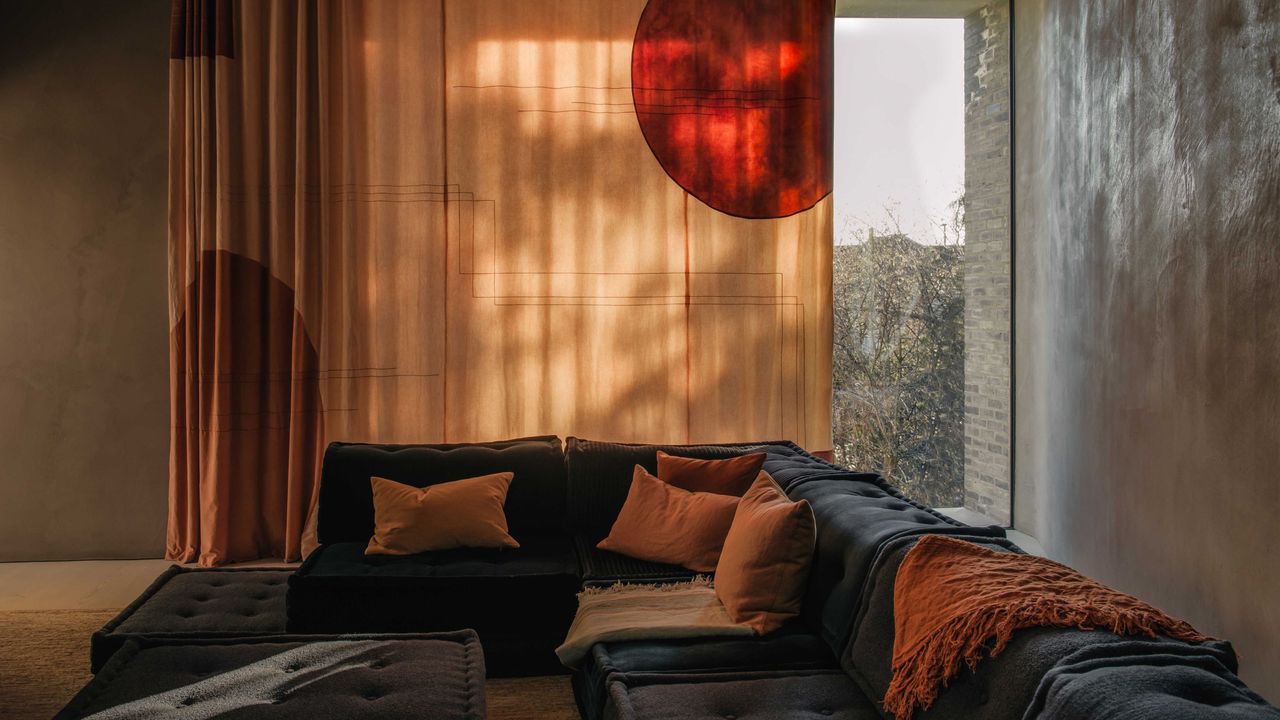
Autumn is officially upon us, and while this time of year is my favorite for many reasons, the opportunity to make my living room warm and cuddly in anticipation of the winter evenings to come is one that I always look forward to.
Layering fabrics is perhaps the most obvious way to boost a cozy living room: think wool throws, textured cushions, and plush rugs. When mixing and matching different materials, colors, and even patterns, however, knowing how to keep things cohesive but not boring, fun but not cluttered, isn't always so easy.
To guide me on the right path, I enlisted the help of designers, who shared with me their top tricks for layering fabrics in your living room. Below, I've rounded up my favorites, which are already making my living room feel snugglier — and hopefully they will in yours, too.
1. Stick to a Color Palette, but Add Bolder Tones
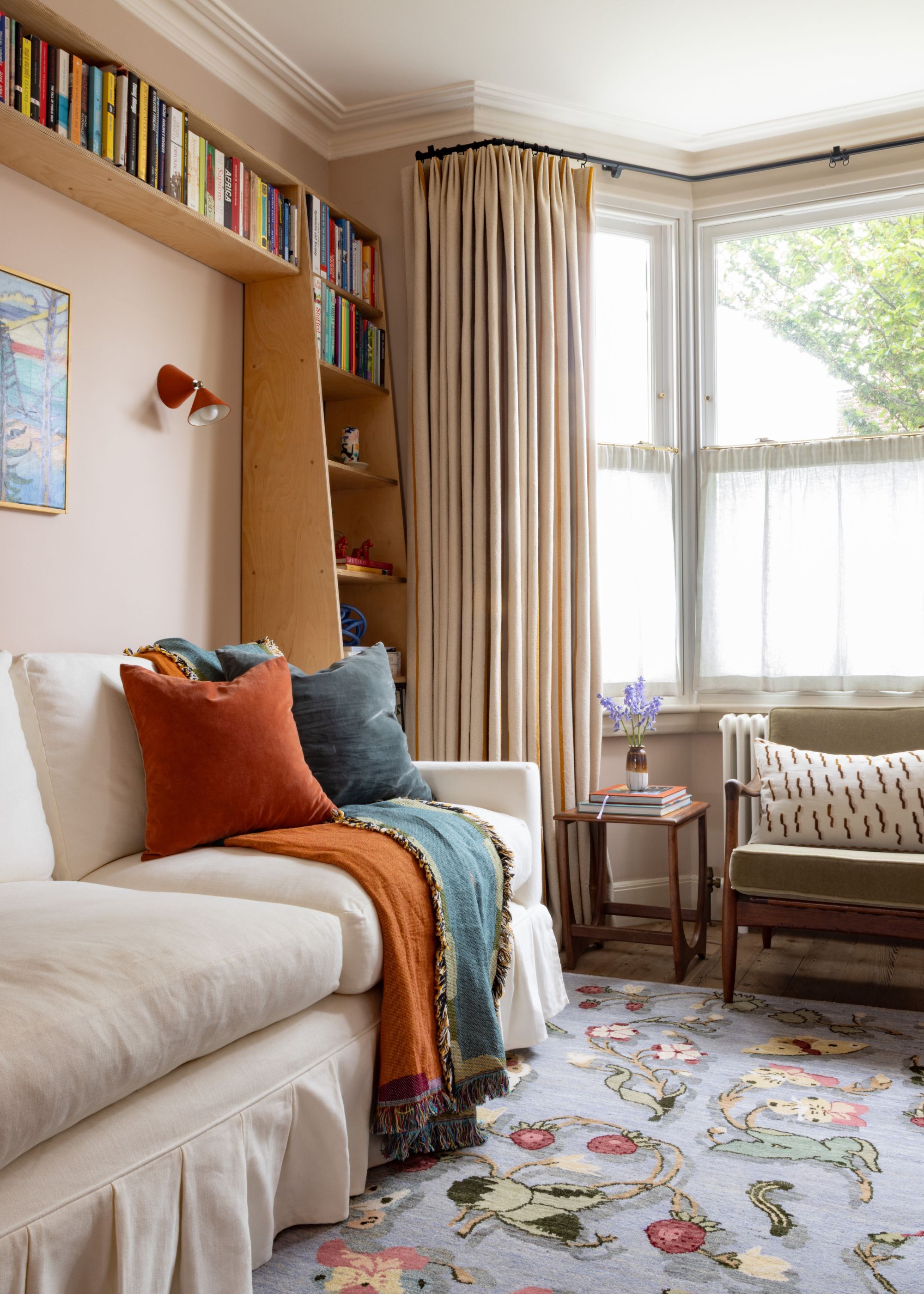
One of the most important steps when choosing fabrics to layer in a room is to master the color palette, designers tell me. "Working to a color palette keeps any space looking cohesive, but adding in flashes of an additional color, whether a pop of red, a brighter blue, or deep browns, adds interest and helps to build that sense of a layered, considered, yet interesting interior," says Ali Childs, the founder of Studio Alexandra.
This approach, where bolder and richer tones add depth (especially effective in neutral rooms), is a good one to follow if you don't want your space to feel too uniform, a common, outdated interior design rule.
"For living rooms, I like to add a large printed throw to sofas and layer this with cushions in different colors and fabrics," Ali adds.
2. Base the Scheme on One Standout Pattern
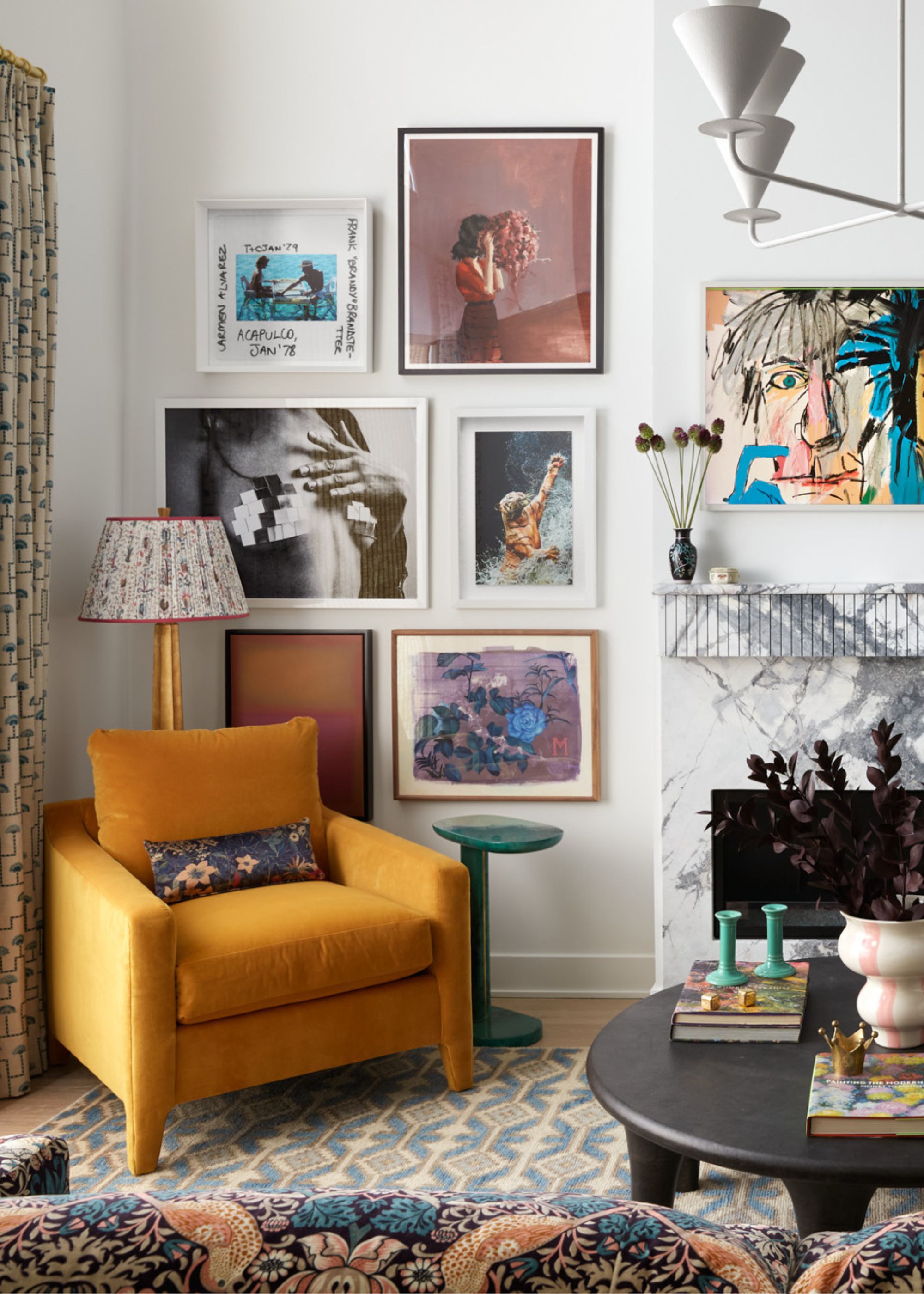
If you enjoy a more maximal look in your living room, designers recommend choosing a standout pattern to inform the rest of the scheme. “We love layering patterns and luxe fabrics throughout our designs, and living rooms are the perfect place to do so," interior designer Michelle Gage tells me. "We like to repeat patterns and colors to keep the space cohesive, often starting with one pattern we love and then thoughtfully building out the rest of the materials around it.”
Whether it's a rug, a patterned sofa, or curtains, starting with one statement piece can help keep the room balanced, even if it's playful.
Interior designer Amanda Jacobs adds that using different scales can be effective when styling the latest pattern trends: "I think about scale: mixing large, medium, and small patterns so the eye dances rather than repeats."
Bring a retro feel to your living room with this geometric print cushion, a stylish pick for maximal decorating tastes.
3. Choose a Common 'Red Thread'
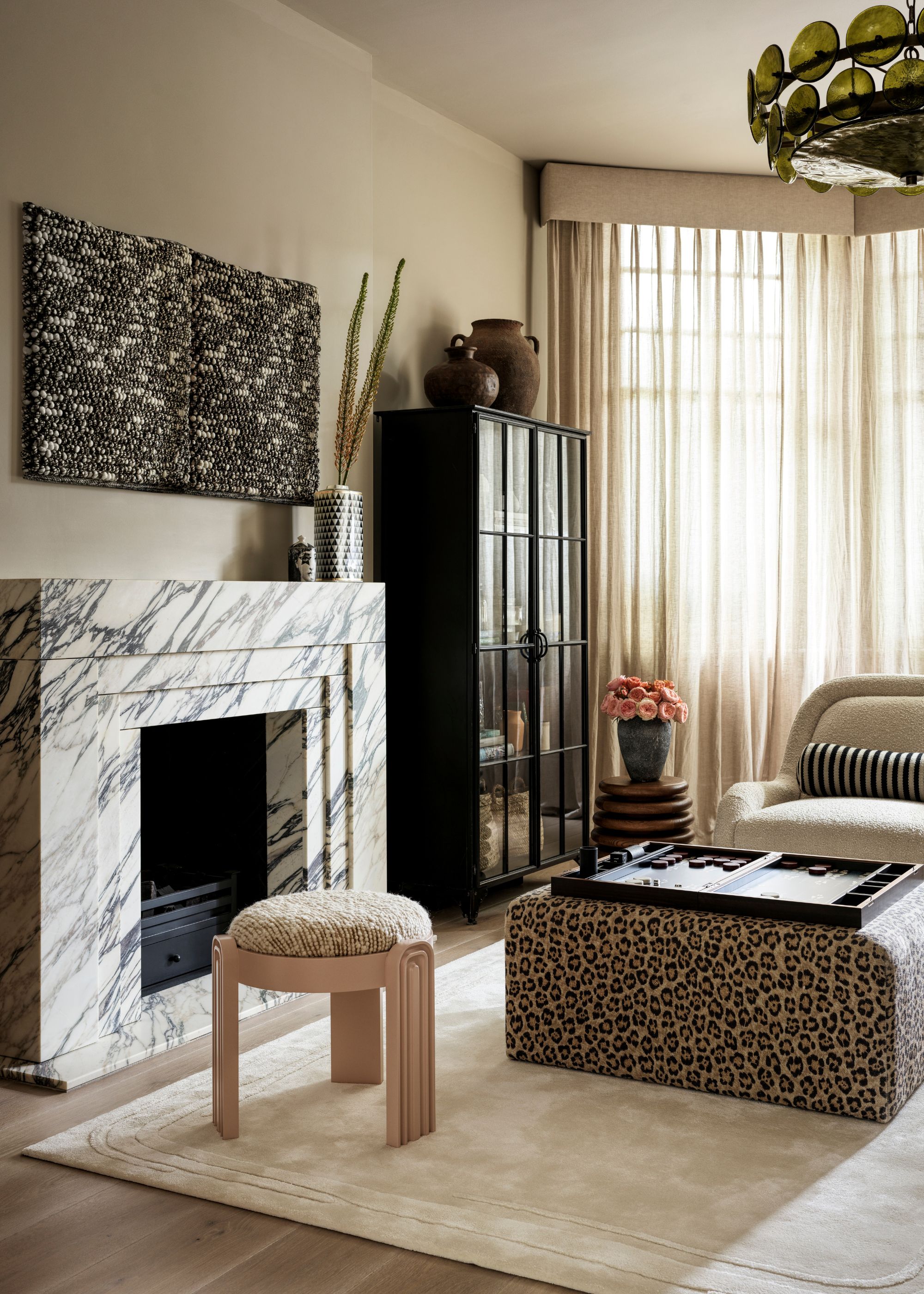
One popular trick in designers' handbooks is choosing a 'red thread' to feature throughout a space to create a tied-together look. "That could be a repeated color, like an accent of blue across cushions, lamps, and art," says interior designer Uns Hobbs. "This subtle repetition ties everything together without making it feel too matchy-matchy, so the room stays harmonious but still full of character."
This is echoed by Amanda Jacobs, who adds: "I love weaving together different styles, but always tethering them with a common thread — often a shared color palette."
Whether it be across curtains, rugs, cushions, or throws, having a common thread, however subtle it may be, allows you to include exciting textures, styles, and patterns without the result feeling disjointed.
4. Start With a Rug to Ground Your Room
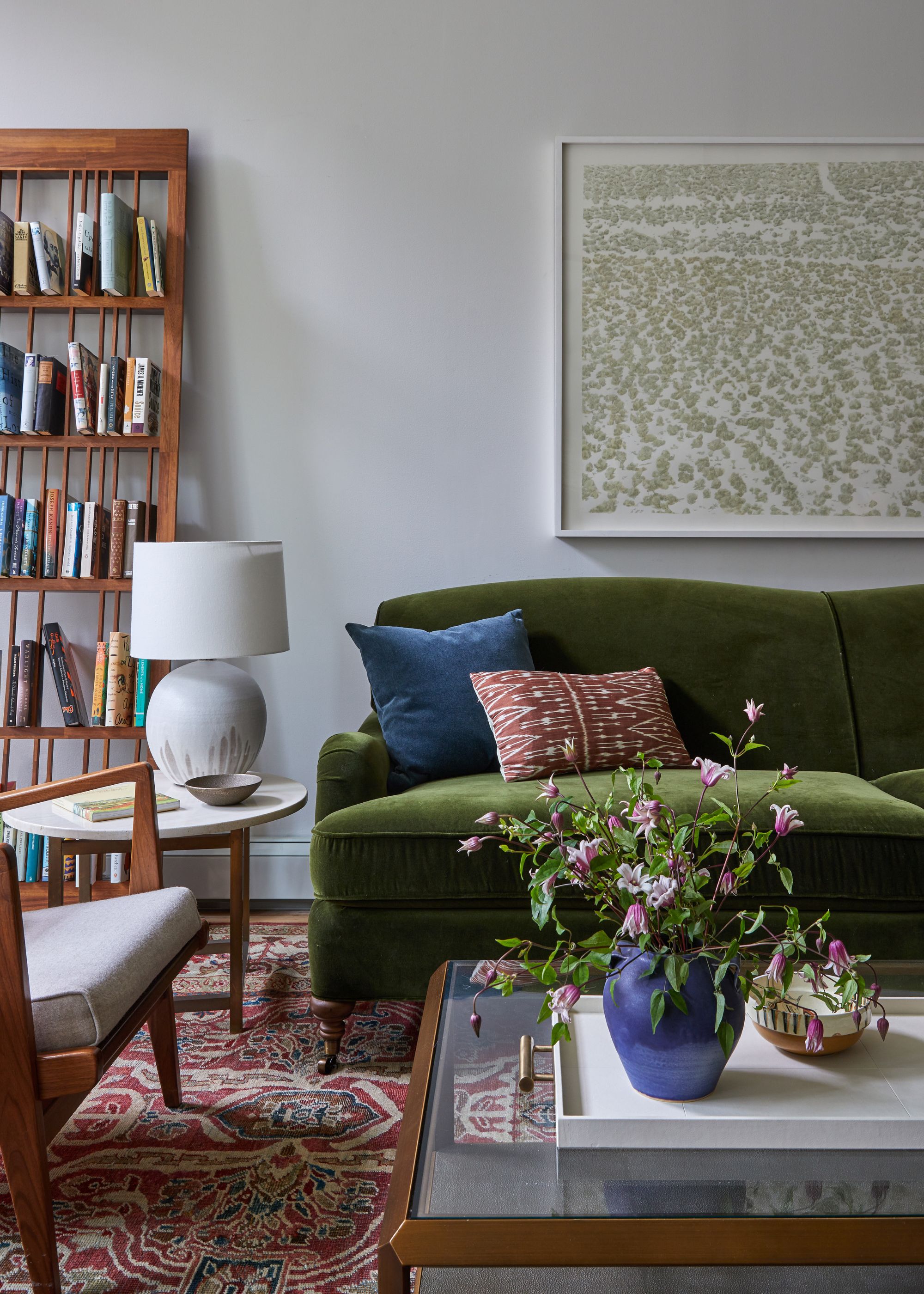
"An old adage is that the rug is the soul of the room, and this is so true when it comes to creating a cozy, layered living space," says interior designer Hannah Blumenthal of Studio Olivine. "I love to start with a richly colored rug, add upholstered pieces in textured fabrics, and then layer in cushions that pull the room together through color and pattern."
When choosing a living room rug, Hannah points to vintage styles. "They provide almost instant coziness with their intricate patterns, time-worn feel, and muted colors," she says. "They are a great grounding piece from which to build the room."
Once you've chosen a rug for your scheme, turn to color theory for the rest of your fabric colors to tie the room together. "When choosing textiles, cushions, and throws, select complementary colors with a similar level of saturation," Hannah suggests. "This allows for a mix that feels cohesive and not chaotic. In this living room, the green sofa may seem unexpected, but it works because the whole room is done in muted gem tones."
Add design flair to your living room with this patterned rug that's available in three different sizes to best fit your space.
5. Focus on Quality Materials and Natural Textures
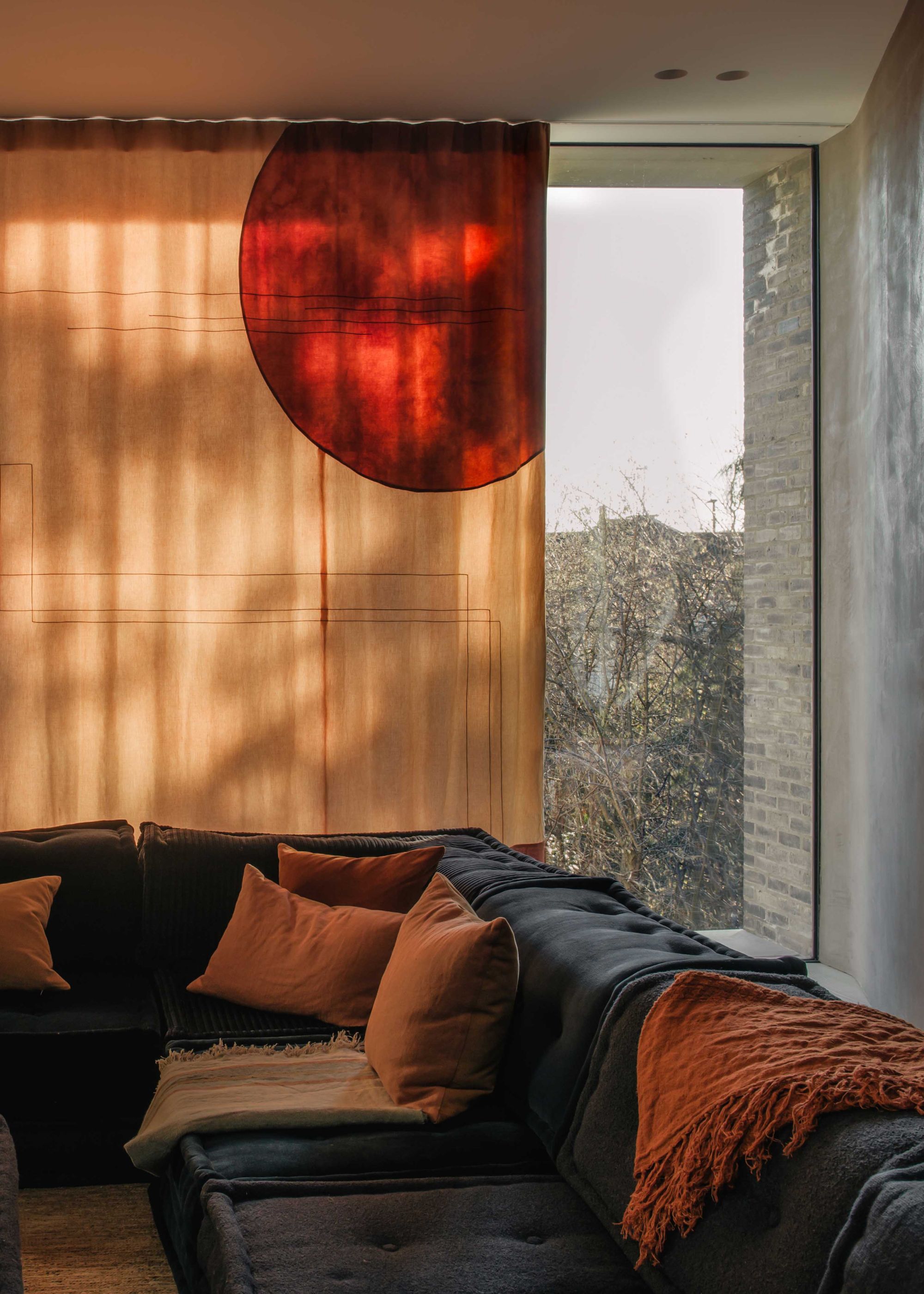
For interior designer Lucy Currell of Studio Iro, layering fabrics in a living room is all about selecting high-quality, tactile materials. "It's such a versatile and effective way to create a really tactile and cozy space," she says. "For the smaller details, don't overdo it. Build up layers slowly, and make sure the places you do layer fabrics also add comfort — do the cushions feel good to lean back on? How comfy does the pile of a rug feel underfoot?"
And when it comes to textiles, quality matters. "We only use natural fibers within our studio," she adds. "They always look elegant, drape well, and are better for your health."
6. Always Add Contrast for Interest
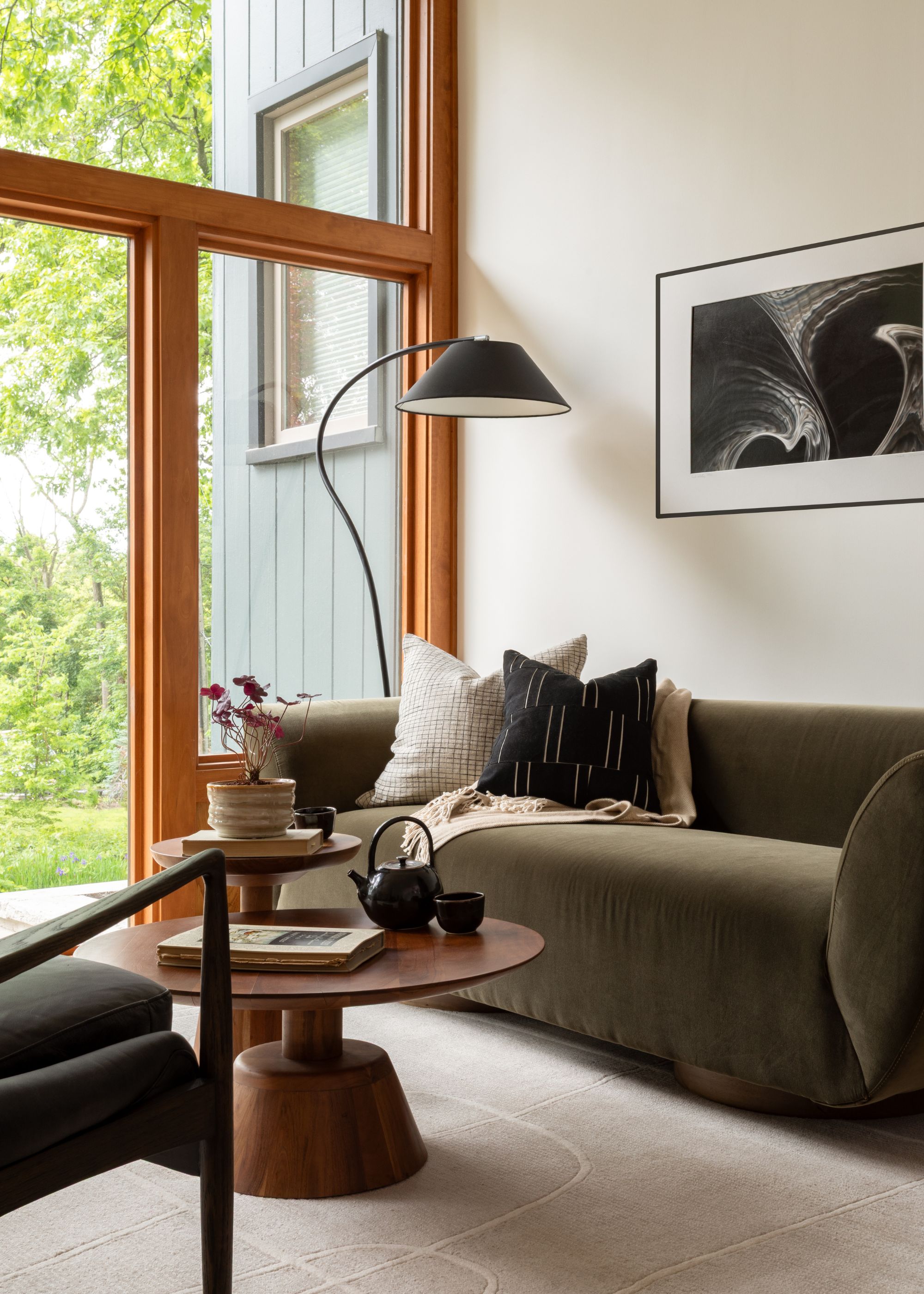
While cohesion amongst fabrics keeps a room feeling uniform, designers advise that adding contrast in interior design keeps the room from feeling too predictable or bland.
"Fabrics should speak to each other without becoming too matchy-matchy," say designers Sarah Goesling and Rebecca Goesling of Goesling Group.
"We love pairing textures that invite touch - think linen against velvet, or bouclé with silk - because those juxtapositions feel both cozy and considered," they add. "Like an unexpected color pairing, a subtle clash in texture can create harmony. It’s the little discoveries that make a living room feel collected rather than styled. A handwoven cushion on a sleek sofa, or a wool throw across crisp cotton."
Add extra warmth to your living room this autumn with this wool blanket, which can also help add contrast with its texture and rich color.
Which of these design hacks will you try in your living room? Whether you're re-designing the whole room or are just adding some seasonal updates, these expert tips will help keep your space cozy and balanced. If you're looking to invest in bespoke upholstery, these are the best fabric brands to know about.







